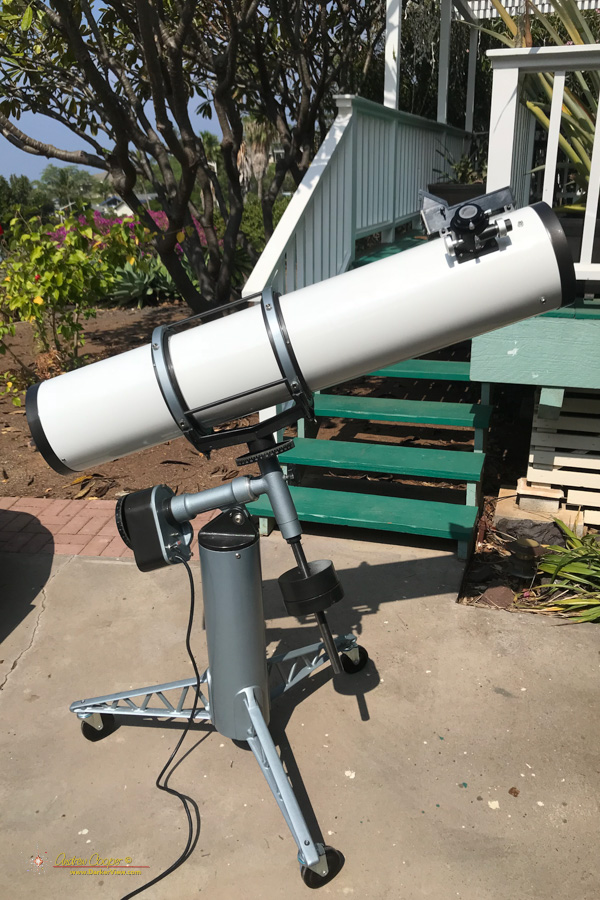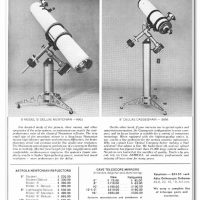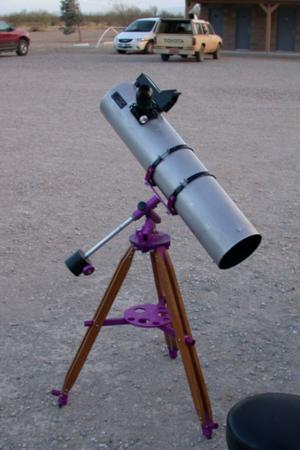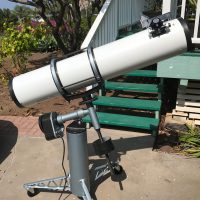
Tag: newtonian
Restoring the Cave Astrola
I do enjoy a nice project I can work on, get my hands dirty, and use my skills. A classic telescope in need of restoration? Just the thing.
This telescope was literally rescued from the trash. Matt, the owner of the excellent Mountain Road Cycles in Waimea found the telescope at the transfer station.
Matt put a message into the folks at the observatory, who represent more than a few of his customers. The info was quickly forwarded to me, as everyone here knows I build and restore telescopes for fun.
Continue reading “Restoring the Cave Astrola”Dreaming of a Cave Astrola
Restoring the 8″ Cave Astrola has me again looking at these classic telescopes. Reading the history of Tomas Cave and Cave Optical. Looking at the old advertisements and remembering things long thought forgotten. I may never have owned one before, but the Astrolas still had an impact upon me years ago.
My Astrola is now operational, with final assembly and collimation completed a week ago. So far I have used it for several evening sessions of observing from the driveway. The result is several pages of notes in the observing log, wandering through nebulae, clusters, and binary stars in Orion, Canis Major, and Puppis.

Deep Violet, an 18″ f/4.5 Dobsonian
In April 2001 I realized a dream that had been many years in the dreaming and a year in the making, a large aperture dobsonian.

- The scope had to have sufficient aperture to take advantage of the dark skies available near Tucson. I wanted to see spiral arms in galaxies.
- The design was to be visual only. No drives, but provisions for an equatorial platform at a later date.
- The mount would be a no compromise rigid structure, capable of allowing good optics to perform at their best.
- The scope had to fit through a standard doorway.
- The scope had to fit in the cargo compartment of a Ford Explorer Sport without dropping the seat for safety during transport.
- The eyepiece must not be an excessive distance above the ground, allowing use while standing on the ground much of the time. (But then, I’m 6’2″ tall)
Over a decade of engineering experience has taught me that a well defined set of specifications can make all the difference at the end of a project. With these design goals in mind the plan then progressed rapidly.
Rebuilding a 12.5″ f/5 Truss Tube Dobsonian

Mechanically the scope had a few problems. The truss tubes were attached with separate hardware top and bottom, so that setup required over 20 minutes of sorting through screws and futzing with eight separate truss tubes waving around the whole time.
The elevation bearings had been set about 1/8th inch off from each other leading to a side to side twist when the scope was moved in elevation. This was not a major problem when using the scope visually but would make the use of digital setting circles impossible as DSC’s require orthogonal axis in the scope.
The ground board was a bit undersized, making the scope prone to tipping when used at low elevation.
The rebuilt scope is essentially finished with the usual tweaking and small adjustments remaining. Things are coming out very well and a few of the changes are worth passing along to the ATM community. In the sections below I will concentrate on practical details in hope of conveying some of the finer points in telescope making.
Continue reading “Rebuilding a 12.5″ f/5 Truss Tube Dobsonian”
Primero
Every astronomer has a first telescope, mine is a 6″ f/5.1 Newtonian I first built as a teenager. As life progressed I was forced to dismantle the telescope and it dwelt for a time as a pile of parts in a box. Eventually I had an opportunity to rebuild the telescope, but as both my technical capability and my financial means had increased I was able to do a substantially better job.

The optical design of the telescope is standard Newtonian with a f/5.1 primary mirror of 6.0 inches giving a focal length of 777mm. The mirror was hand ground when I was a teenager and thanks to expert help during figuring is an excellent mirror.
The RFT design is deliberate and has proven to be a good choice, particularly with modern eyepieces that perform so well in short focal length scopes. With a 35mm Tele-Vue Panoptic eyepiece the scope provides a 22x image with just over a three degree field.

